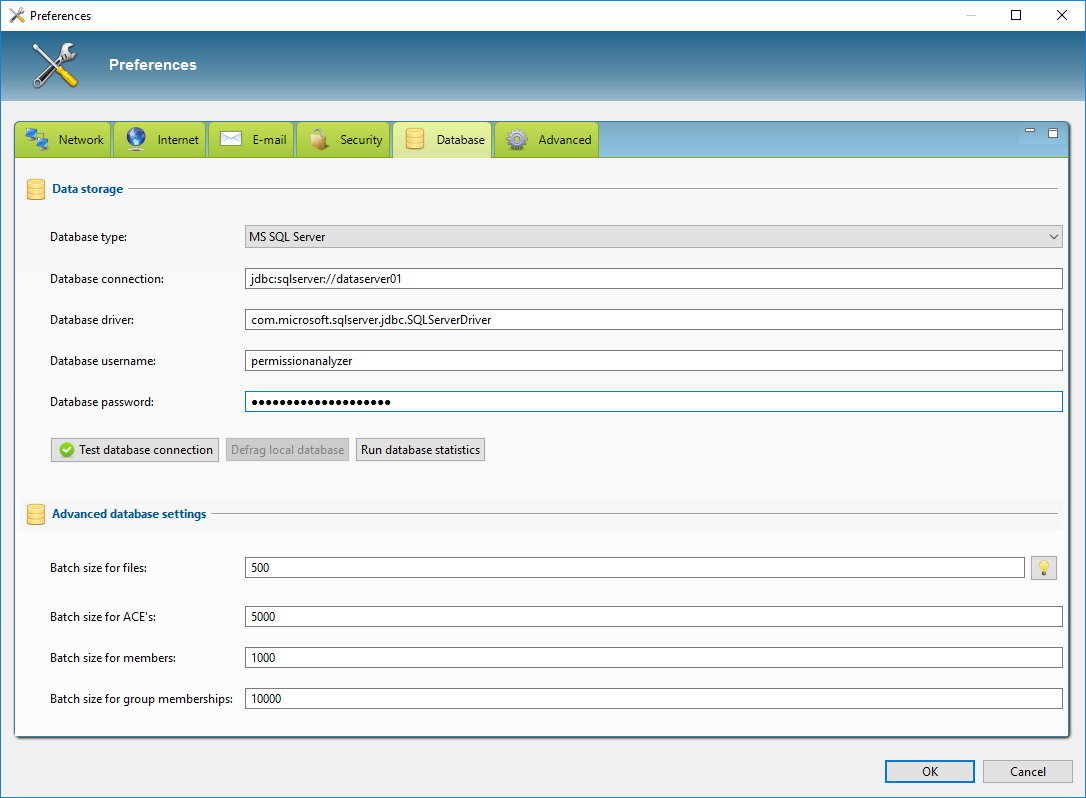Using an external database
Although Permission Analyzer is supplied with a local database (H2), which is simply a file in the application directory, you can choose to use a central database to share scanned information, filters, reports and policies between installations of Permission Analyzer or to run your own queries on the database. Permission Analyzer supports Oracle, DB2, MS SQL, MySQL, PostgreSQL, Derby and H2. Please note that this feature is only supported by the Enterprise and Consultant editions.
If you want to use a database other than MS SQL Server, then first download the Driver Pack and overwrite the External_DB_Drivers_1.0.0.jar file in the plugins directory of Permission Analyzer. Then restart the application (once) using the -clean parameter. You may need to run the application as an administrator for this action to succeed
Run one of the following SQL scripts on your central database to create the tables for Permission Analyzer:
- MSSQL create script
- Oracle create script
- DB2 create script
- MySQL create script
- PostgreSQL create script
- Derby create script
- H2 create script
Once the database has been created, open Settings. In the Database tab you will then be able to select an external database and enter the connection details.
The batch size in the advanced database settings indicates the number of records that is being sent to the database at once. It is a tradeoff between speed, memory usage and the size of transaction logs in the database. The larger the batch size, the more memory and required space for the transaction log it will need.


